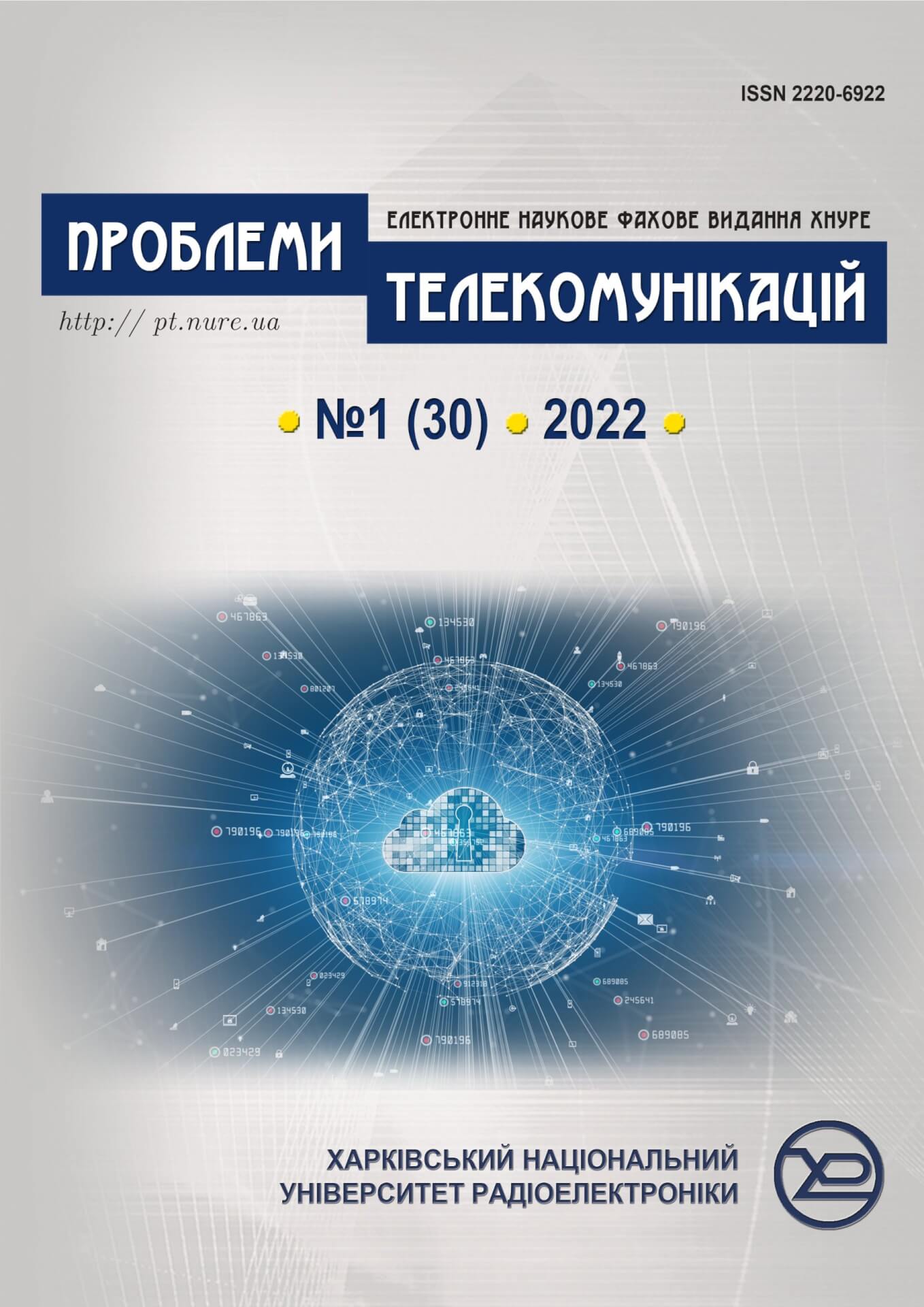Дослідження ефективності алгоритмів машинного навчання для класифікації трафіка в мобільних мережах
DOI:
https://doi.org/10.30837/pt.2022.1.01Анотація
Розвиток мобільних мереж і поява нових стандартів, як-от 5G та в перспективі 6G, призводять до збільшення як обсягів трафіка у мережі, так і до появи нових типів трафіка, зокрема зі специфічними вимогами до обслуговування. Існуючі на цей час методи обробки трафіка не адаптовані до таких змін, що може привести до погіршення якості обслуговування. Можливим шляхом вирішення задачі підвищення ефективності обробки інформації є впровадження нових алгоритмів класифікації та пріоритезації трафіка. У зв`язку з цим у роботі ставиться актуальне завдання аналізу ефективності алгоритмів машинного навчання для вирішення завдання класифікації трафіка в мобільних мережах у режимі реального часу. Для досягнення мети аналізується точність класифікації та швидкодія для найпоширеніших алгоритмів машинного навчання та визначається оптимальний алгоритм за критерієм точності класифікації. Результати порівняльного аналізу показали, що найкращих показників точності можна досягти у разі використання алгоритмів ANN (кількість прихованих шарів мережі дорівнює 200) та RF. При цьому до переваг ANN слід віднести високу оперативність і достовірність обробки інформації, а також простоту у навчанні. В той же час RF хоча і є швидким і потужним алгоритмом класифікації, але він має недоліки під час інтерпретації рішення та неефективний для малих обсягів даних. Крім того, у роботі виконано оцінку важливості полів датасету для класифікації. Вказані вдосконалення можуть бути впровадженні як на кінцевих пристроях, так і на базових станціях, що дозволяє підвищити якість класифікації, кластеризації та обробки пакетів, а також підвищити ефективність інтелектуальної системи управління мобільною мережею загалом. Подальшим розвитком теми може бути застосування досліджуваних алгоритмів для вирішення завдань виявлення аномалій трафіка з метою підвищення захищеності мережі.
##submission.downloads##
Опубліковано
Номер
Розділ
Ліцензія

Ця робота ліцензується відповідно до Creative Commons Attribution-NonCommercial-ShareAlike 4.0 International License.
Автори, які публікуються у цьому журналі, погоджуються з наступними умовами:- Автори залишають за собою право на авторство своєї роботи та передають журналу право першої публікації цієї роботи на умовах ліцензії Creative Commons Attribution License, котра дозволяє іншим особам вільно розповсюджувати опубліковану роботу з обов'язковим посиланням на авторів оригінальної роботи та першу публікацію роботи у цьому журналі.
- Автори мають право укладати самостійні додаткові угоди щодо неексклюзивного розповсюдження роботи у тому вигляді, в якому вона була опублікована цим журналом (наприклад, розміщувати роботу в електронному сховищі установи або публікувати у складі монографії), за умови збереження посилання на першу публікацію роботи у цьому журналі.
- Політика журналу дозволяє і заохочує розміщення авторами в мережі Інтернет (наприклад, у сховищах установ або на особистих веб-сайтах) рукопису роботи, як до подання цього рукопису до редакції, так і під час його редакційного опрацювання, оскільки це сприяє виникненню продуктивної наукової дискусії та позитивно позначається на оперативності та динаміці цитування опублікованої роботи (див. The Effect of Open Access).

